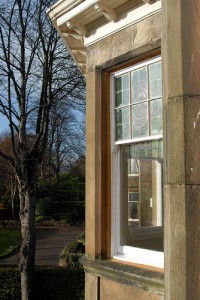We’ve all sat there in a nice comfortably warm room and suddenly, almost bizarrely we can feel a draught. It’s annoying but did you know draughts like that could also be costing us money?
We heat our properties and the construction of the building should help to retain that heat, but in many ways there are weak points in our properties that undermine the heat retention and invite cold air in. The heat loss to the outside and the cold air coming into the property means that our nice comfortable temperature is undermined. To maintain the temperature we have to run our heating systems for longer, which means more energy used and higher utility bills. We want to help you reduce your fuel bills.
Where are the heat retention weak points?
The most common points are those that are naturally placed in the walls of the building, such as windows and doors, which break up the heat retention properties of the construction materials.  No matter what the energy efficient claims and properties of the type of windows and doors, these areas are always where the heat loss is the largest. If you stand in the centre of a comfortably warm room for about five minutes, then go to stand by an uncovered window you will notice the change in temperature as it will be definitely cooler. This is caused by the thermal properties of glass, the thickness of the materials, as well as the qualities of construction of the frames. Even with the best glazing in the world, there is still this ‘thermal drop’ in the vicinity of windows.
No matter what the energy efficient claims and properties of the type of windows and doors, these areas are always where the heat loss is the largest. If you stand in the centre of a comfortably warm room for about five minutes, then go to stand by an uncovered window you will notice the change in temperature as it will be definitely cooler. This is caused by the thermal properties of glass, the thickness of the materials, as well as the qualities of construction of the frames. Even with the best glazing in the world, there is still this ‘thermal drop’ in the vicinity of windows.
So what can we do?
Well, as simple as it sounds most things are common sense. For example, with windows fitting heavier and longer curtains and making sure they are drawn at night, or when the weather is the coldest. This gives an additional material barrier to prevent the heat loss from the air. Check your windows to make sure that they are shut correctly and that the frames are sound. If you can detect draughts around the window frames then you might choose to undertake some measures to ensure the window frames are more airtight. There are various DIY measures that could be undertaken or you can easily seek the advice of a professional contractor. All of these measures apply to doors as well.
Even more basic measures include the use of old fashioned draft excluders which can be positioned where the airflow of a draught comes through a frame, for a door this is normally at the foot of the door, and this combined with the effect of curtains could help to prevent draughts and heat loss. Draught excluders are available from many retail outlets, or can be made at home using house hold materials.
We are all encouraged to now turn down our thermostats by one degree to save ourselves money. By eliminating draughts from cold air flow in your property you will help to maintain that comfortable temperature for longer and to also energy as well as money on your utilities. Some very simple and easy to introduce measures to save you money; you can’t beat that!
Photo by williefogg
Good introductory article covering the basics, which are all too often overlooked!
A seasonal add on might be for home owners to fit reflective window films to the windows. These films let the majority of light through, but reflect a large portion of the suns solar energy (heat), which will helps to keep your house cool during the warm months (thus saving energy consumption on fans and air conditioning).
When light levels fade in winter the films can easily be removed.
Its interesting you mention the additional points in regard to benefitting from the natural solar energy. We have an article we have just written specifically on solar heat gain which will be live tommorrow.
Draught proofing is not only exceptionally effective at reducing heating bills. Given it’s low impact on materials and resources creates an excellent carbon payback.